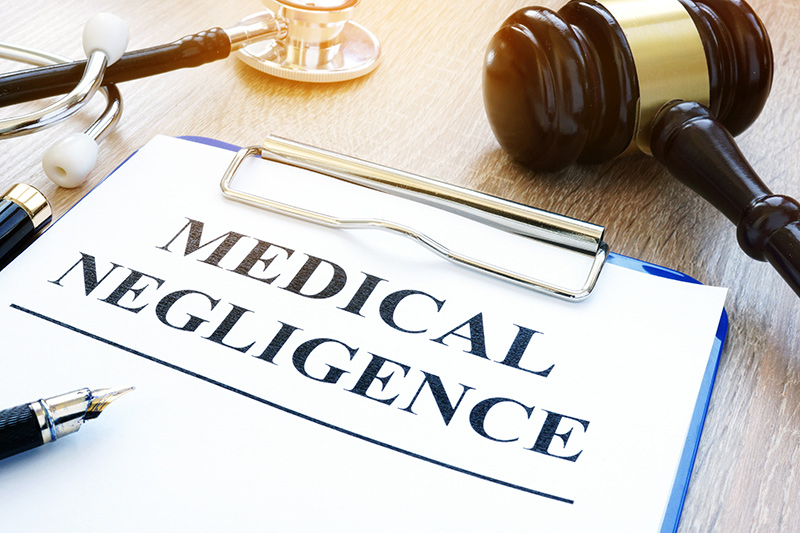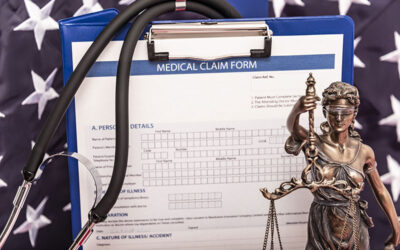This is a continuation of the ideas presented in our earlier blog “Universal Precautions and Standard Precautions & Their Legal Significance.”
Medical negligence cases are of different types and involves the negligence or carelessness of a healthcare provider, whether physician, nurse, clinical staff, hospital and so on. These cases require medical records review that will help establish the negligence or malpractice, if any. Hospital acquired infections or HAIs are painfully common in the United States. The CDC (Centers for Disease Control and Prevention) says that HAIs cause or contribute to as many as 75,000 deaths each year. Apart from this, every year more than 720,000 patients acquire serious infections while in the hospital (CDC’s 2011 survey results). So, hospital-acquired infection is a serious concern that could lead to serious illness, long-term health problems, or even the death of a person. When talking about liability for a HAI, it depends on how and where the victim contracted the illness or disease. It is very important that hospitals and other healthcare facilities follow strict protocols as regards cleanliness and sterility of the treatment environment. Any failure to follow such effective, safe practices can result in a medical malpractice case if a patient experiences infection-associated harm.
Types of Hospital-acquired Infections
A hospital acquired infection can be got from anywhere healthcare is being administered – nursing homes, hospitals, and other healthcare settings. Typically, these HAIs are caused by virus, bacteria, fungus or other types of pathogens. HAIs include surgical site infections, bloodstream infections, pneumonia, and UTIs or urinary tract infections. According to the government healthcare website, these infections are typically spread via contaminated surfaces, contaminated workplace environment, surgeries wherein proper sanitizing measures are not taken, the improper use of antibiotics, unsterile injections, and also when using medical devices such as catheters. Moreover, healthcare staff and patients themselves could spread the infection.
- Staph (staphylococcus) infection is one type of HAI. If these bacteria enter the body through a surgical incision or a wound, they can cause an infection that could turn serious and lead to complications or even death if left untreated. Staph bacteria survive on linens and surfaces and can be transmitted from one person to another.
- Other bacteria that cause HAI are some strains of the enterococci bacteria. This bacterium is resistant to many antibiotics used in hospitals, and could affect the bloodstream, urinary tract, or wounds associated with catheters or surgical procedures. Improper cleaning procedures are a major reason for enterococci bacterial infection in hospitals. Person-to-person contact could also spread the bacterial infection.
- C.diff or clostridium difficile is another bacterium that could cause a HAI. It is found in the gastrointestinal tracts of around 5% of the population. Typically, other bacteria present in the tract control it. However, patients admitted in a hospital and taking antibiotics could experience a bacterial imbalance and this allows the C.diff bacteria to take control and cause issues such as colon infection or diarrhea.
- HAIs can also be catheter-related bloodstream infections or central line-associated bloodstream infections. Typically, such infections occur in the intensive care units (ICUs) and recovery wards when the patient has a catheter tube inserted into his/her body to draw blood or administer medication and fluids. Bacteria could enter via the insertion point, or move down the central line and reach the bloodstream.
Hospital-acquired COVID-19 Cases Increasing
Recently, cases of COVID-19 or the SARS-CoV-2 virus infections acquired in hospitals have been consistently reported. This is in spite of the many measures taken to contain the infection. According to an MDPI article published in January this year, hospital-acquired COVID-19 is a serious public health concern and there is an alarming rate of HAIs. Several reports place the prevalence of hospital-acquired COVID-19 virus at 12 – 15%. This calls for more effective measures on the part of healthcare personnel to prevent further spreading through rigorous compliance with procedures to contain the infection. At the same time, patients admitted to hospitals must also make sure that individual protection measures are focused on more.
HAIs from a Medical-Legal Viewpoint
When it comes to HAIs being regarded from a medical-legal point of view, many factors are considered to understand whether the infection is a result of malpractice or an inevitable condition. If the hospital or other healthcare facility has not implemented sufficient infection control measures, or if their staff did not follow all the infection control measures, they may be held liable. If a HAI was preventable and happened as a direct consequence of the healthcare facility’s/their staffs’ failure to act responsibly and reasonably, then the healthcare facility may be held liable for the plaintiff’s infection/injury.
The liability could fall on the hospital that did not maintain a strict standard of cleanliness and hygiene throughout the building; or on the medical staff and doctors who failed to disinfect their tools and themselves frequently and thereby caused the spread of disease infection; or medical device manufacturers that provided a poorly designed medical tool or inadequate cleaning instructions. For a HAI-related medical malpractice lawsuit to be successful, it is required to prove the defendant’s liability. This is typically done by a qualified expert medical witness who will carefully review the medical records to understand the treatments provided and other details. A thorough medical records review will help understand whether the facility and its staff have complied with the appropriate medical standard of care at every turn.
The Need to Follow Universal Precautions & Standard Precautions
To ensure adequate infection control measures, healthcare providers need to have a good understanding of the Universal Precautions and Standard Precautions to follow. If a HAI-related malpractice case comes to court and it is found that the infection was preventable, but occurred due to the negligence of a healthcare provider, the case could be successful and the plaintiff may be able to recover compensation for damages, including cost of medical care, lost wages, and pain and suffering.
Hospital Acquired Infections are an increasing concern in the United States, and can result in serious consequences. HAIs may occur naturally, while others are preventable and occur because of someone’s negligence. HAIs can be reduced or even eliminated with adequate infection control measures. The primary measure is to properly clean and disinfect surfaces, surgical instruments, and hands. Proper sterilization of the wounds, instruments, incision sites, environment and one’s hands can help reduce the risks considerably. Another option is to screen all incoming patients to ensure that they are not carrying any infection.




